The Hanseatic City of Lübeck is situated on the Baltic Coast in Germany. Lübeck was founded in the 12th century. The Old City of Lübeck is situated on an island, surrounded by the River Trave. Lübeck was the capital city of the Hanseatic League and between 1230 and 1535 an important northern European trading centre and was extremely rich and influential in Northern Europe. Lübeck is known for its brick Gothic architecture, this architecture is inextricably connected to the Hanseatic cities and can still be seen in many cities around the Baltic Sea, in the north of Germany, Belgium, Denmark, Poland and the Netherlands. The Hanseatic City of Lübeck was home to wealthy merchants and artisans. Many brick Gothic houses and churches were built during the height of the Hanseatic League. The brick Gothic Church of St. Mary served as a model for the brick Gothic style of churches in the Baltic Region. The Church of St. Mary is the third-largest church in Germany, after the Ulm Minster and Cologne Cathedral. During World War II, Lübeck was severely damaged, an Allied air raid created a firestorm that partly destroyed the three main churches, merchant houses and several other buidings. Despite this damage, the wealth of the Hanseatic City can still be seen in the brick Gothic buildings all over Lübeck. One of the renowned brick Gothic buildings in Lübeck is the Holsten Gate. Other important buildings are the brick Gothic churches and the Town Hall of Lübeck. The Hanseatic City of Lübeck gained the status as a UNESCO World Heritage in 1987.
www.werelderfgoedfotos.nl © Copyright World Heritage Photos
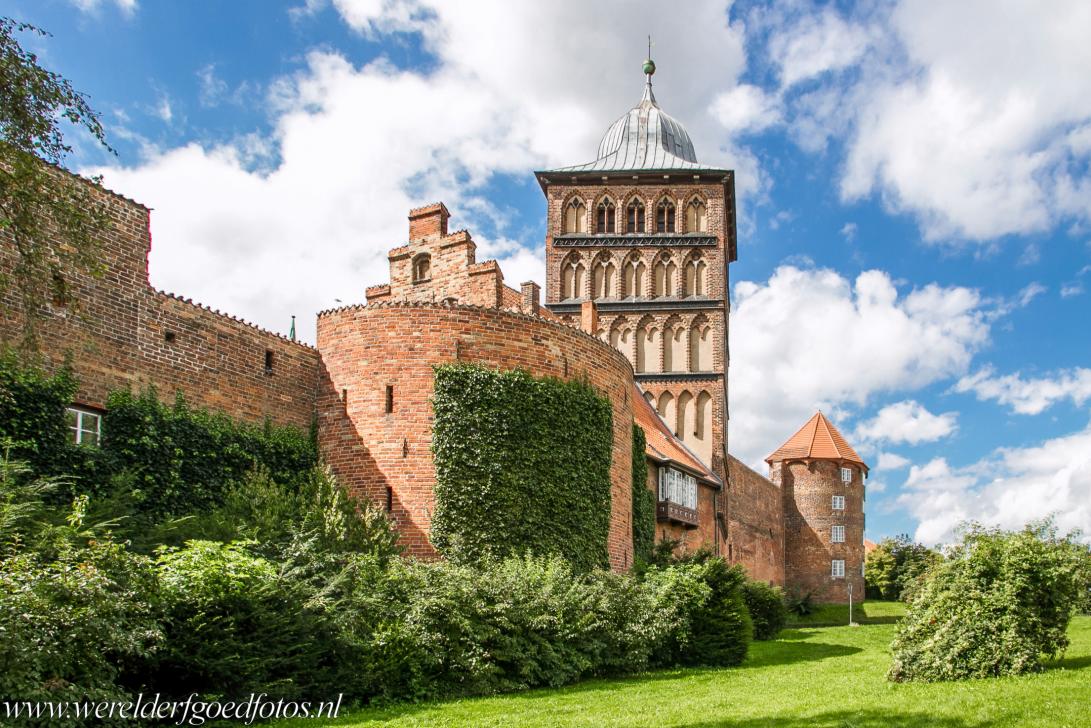
Hanseatic City of Lübeck: The Burgtor, Castle Gate, is one of the remaining city gates. The brick Late Gothic Burgtor was built in 1444. During the Middle Ages, the tower was adorned with red and black brick stones. The bronze roof was added in the Baroque style in 1685. The Hanseatic City of Lübeck was inscribed on the UNESCO World Heritage List in 1987.

Hanseatic City of Lübeck: The Burgtor, Castle Gate, is one of the remaining city gates. The brick Late Gothic Burgtor was built in 1444. During the Middle Ages, the tower was adorned with red and black brick stones. The bronze roof was added in the Baroque style in 1685. The Hanseatic City of Lübeck was inscribed on the UNESCO World Heritage List in 1987.
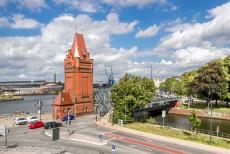
Hanseatic City of Lübeck: The Bridge Tower next to the Hubbrücke, a lift bridge. The Hubbrücke crosses the Elbe-Lübeck Canal, also known as the Elbe -Trave Canal. The bridge consists of three parts, a railway bridge, a traffic bridge and a footbridge. The hydraulic lift bridge is over hundred years old. The Bridge Tower is an example of the brick Gothic architecture.
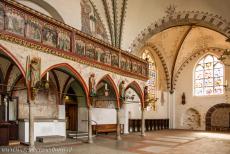
Hanseatic City of Lübeck: In the 13th century, a rich merchant of Lübeck founded the Hospital of the Holy Spirit for the sick, the poor, the orphans and the elderly. The interior of the hospital has changed little over the centuries. The entrance is adorned with Gothic frescoes and statues. It is one of the best preserved medieval hospitals in Germany and one of the oldest in Europe.
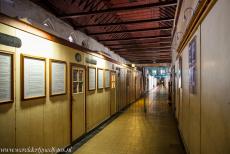
Hanseatic City of Lübeck: The tiny roofless chambers inside the Hospital of the Holy Spirit. The wooden chambers, in German called kabäuschen, were constructed in the early 1900s to house homeless people. The wooden kabäuschen were still in use until the 1960s. The Hospital of the Holy Spirit is one of the oldest social organisations in Europe.
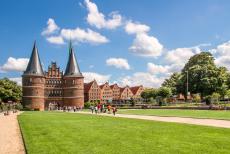
Hanseatic City of Lübeck: The imposing Holsten Gate, the Holstein Tor or the Holstentor, is one of the remaining city gates of Lübeck. The Late Gothic gate was built of red brick from 1464 to 1478. The thickness of the walls is 3,5 metres. The tower was built as a defensive city gate, but also as a status symbol. The Holsten Gate became the symbol of the Hanseatic City of Lübeck.
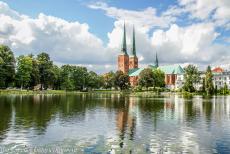
Hanseatic City of Lübeck: Lübeck Cathedral and the houses of Malerwinkel, the Painter's Corner, one of the medieval urban areas of Lübeck. Lübeck is situated on the Baltic Coast at the mouth of the Trave River. During the Middle Ages, Lübeck was an important trading centre in Northern Europe. The Hanseatic City of Lübeck was declared a UNESCO World Heritage in 1987.
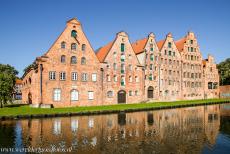
Hanseatic City of Lübeck: The Salzspeicher, the salt storehouses, along the Upper Trave River. The six historic storehouses were wholly built of red brick in the 16th-18th centuries. Salt was mined around Lüneburg and brought to Lübeck. From Lübeck it was shipped all over the Baltic Region. The salt trade made Lübeck one of the most important cities of the Hanseatic League.
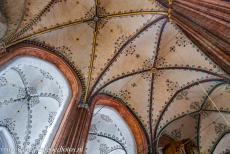
Hanseatic City of Lübeck: The decorated vaults of the Marienkirche, the Church of St. Mary. The Church of St. Mary is the third-largest church in Germany, it was built between 1250 and 1350 and houses numerous works of art, such as an astronomical clock. The brick Church of St. Mary served as a model for the brick Gothic style of churches in the Baltic Region.
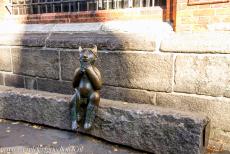
Hanseatic City of Lübeck: A small bronze statue of a devil sitting on the Devil's Stone is situated beside the Marienkirche, the Church of St. Mary. The legend of the Devil's Stone is: during the construction of the church, the devil dropped the stone near the wall of the church, where it is lying until this day. One can see still the devil's claws on the stone. The statue was made in 1999.
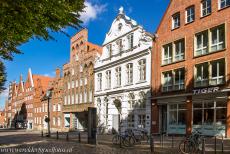
Hanseatic City of Lübeck: The Buddenbrook House is also known as the Thomas Mann House. The Buddenbrook House was the home of the grandparents of the Nobel Prize winning author Thomas Mann. The house plays a major role in Thomas Mann's novel the Buddenbrooks. Now, it houses a museum dedicated to Thomas Mann and his brother, the author Heinrich Mann.
